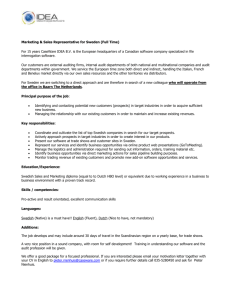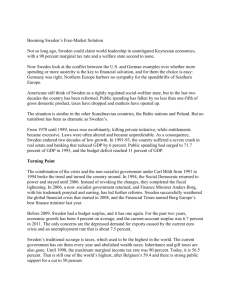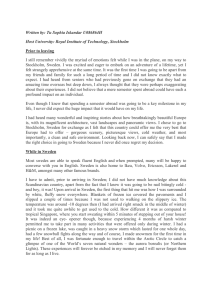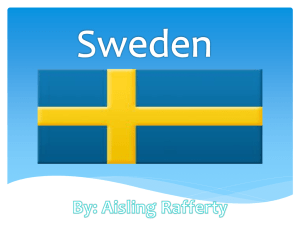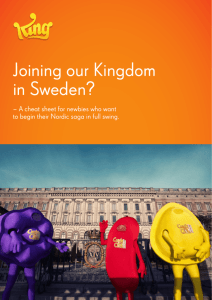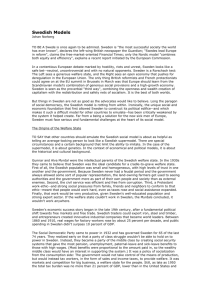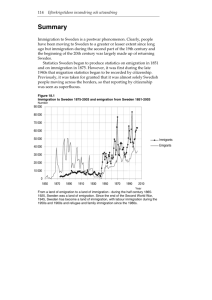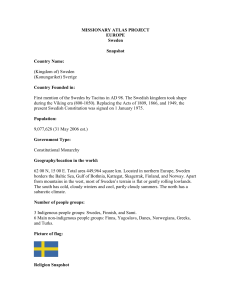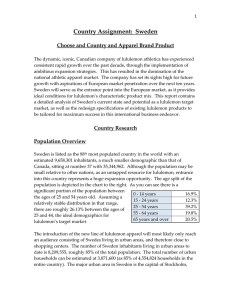Meet Swedish People
advertisement
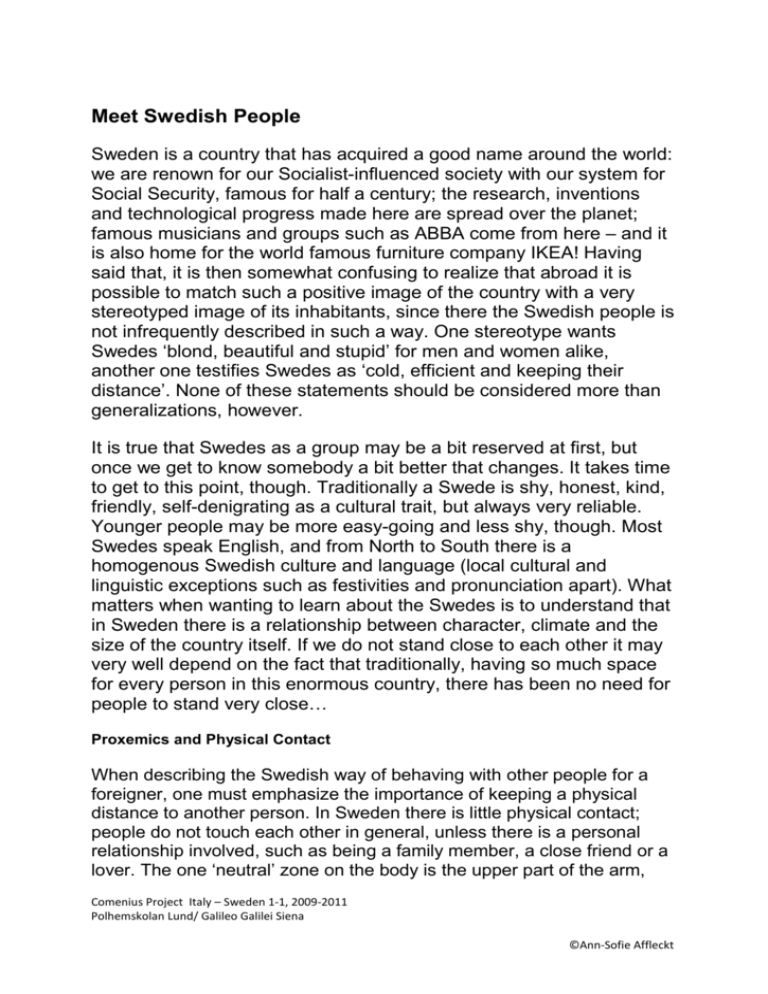
Meet Swedish People Sweden is a country that has acquired a good name around the world: we are renown for our Socialist-influenced society with our system for Social Security, famous for half a century; the research, inventions and technological progress made here are spread over the planet; famous musicians and groups such as ABBA come from here – and it is also home for the world famous furniture company IKEA! Having said that, it is then somewhat confusing to realize that abroad it is possible to match such a positive image of the country with a very stereotyped image of its inhabitants, since there the Swedish people is not infrequently described in such a way. One stereotype wants Swedes ‘blond, beautiful and stupid’ for men and women alike, another one testifies Swedes as ‘cold, efficient and keeping their distance’. None of these statements should be considered more than generalizations, however. It is true that Swedes as a group may be a bit reserved at first, but once we get to know somebody a bit better that changes. It takes time to get to this point, though. Traditionally a Swede is shy, honest, kind, friendly, self-denigrating as a cultural trait, but always very reliable. Younger people may be more easy-going and less shy, though. Most Swedes speak English, and from North to South there is a homogenous Swedish culture and language (local cultural and linguistic exceptions such as festivities and pronunciation apart). What matters when wanting to learn about the Swedes is to understand that in Sweden there is a relationship between character, climate and the size of the country itself. If we do not stand close to each other it may very well depend on the fact that traditionally, having so much space for every person in this enormous country, there has been no need for people to stand very close… Proxemics and Physical Contact When describing the Swedish way of behaving with other people for a foreigner, one must emphasize the importance of keeping a physical distance to another person. In Sweden there is little physical contact; people do not touch each other in general, unless there is a personal relationship involved, such as being a family member, a close friend or a lover. The one ‘neutral’ zone on the body is the upper part of the arm, Comenius Project Italy – Sweden 1-1, 2009-2011 Polhemskolan Lund/ Galileo Galilei Siena ©Ann-Sofie Affleckt between the shoulder and the elbow. A policeman will lead an arrested person holding this part for just that reason. The proxemic distance can also be used as measure for how intimate people are, the general rule is that the closer people stand to each other, the closer their relationship is. There is a difference between whether or not a person is from a city or from the countryside: those who come from the countryside tend to keep a greater proxemic distance in general. A curious fact is that the proxemic distance also is applicable on a bus: you should not sit down in a seat beside another person until bus is full, or this may be considered suspect behavior from your side. Formal and Informal Language; Polite Language In Sweden there is no commonly used formal way to address a person, neither for talking to a stranger, nor a person encountered in a work-related situation. Everybody is on first-person basis with one another. This may strike a foreigner as odd, especially since it is applied within companies too, which traditionally have a hierarchic structure. In an international context it is perceived rude not knowing how to behave in a polite way, and an individual Swede may be considered quite informal as a person, though he/she really is the product of a less formal culture. Until 1968 there was a you-formal construction, though, with the purpose of showing respect/keeping the distances. Interestingly, the you-formal construction has returned among young people in working life (such as in shops) during the last decades, now used in order to show respect. This phenomenon is not uncomplicated, though, “the new you-ing”, as it is known as among language researchers, is not wholly appreciated by customers when interpreted as a way of keeping distances. Today in official communications people are addressed as ‘You’, that is, using the second-person personal pronoun though written with a big first letter, mixing a former thirdperson formal construction with the modern way of addressing people. The effect of this lack of formality is that young people can experience difficulties in identifying different language registers such as formal and informal language. Students may be able to identify certain formal situations such as a job interview, but they are not always able to adapt their language to fit the situation. It is difficult to teach and learn linguistic traits not present in one’s mother tongue. Advisable when Comenius Project Italy – Sweden 1-1, 2009-2011 Polhemskolan Lund/ Galileo Galilei Siena ©Ann-Sofie Affleckt speaking to a Swede is to keep your voice down and to not be too intrusive when stopping somebody in the street. Paralinguistics and Kinesics In Sweden there are none, or at least very few, codified gestures. There are some international gestures that are used, but excessive body language with much gesturing is seen as strange. One instance where speaking with hands is done is when academics and politicians use their hands to underline the importance of what they have said. However, these gestures are not codified. Swedish language is quite similar to the English one in patterns of speaking: facial expression, tone of voice, body language, proximity, and kinesics mimic the other language quite well. Thus it may take a while for a foreigner to learn how to interpret Swedish people’s feelings through watching their postures, mimic and body language. Comenius Project Italy – Sweden 1-1, 2009-2011 Polhemskolan Lund/ Galileo Galilei Siena ©Ann-Sofie Affleckt



